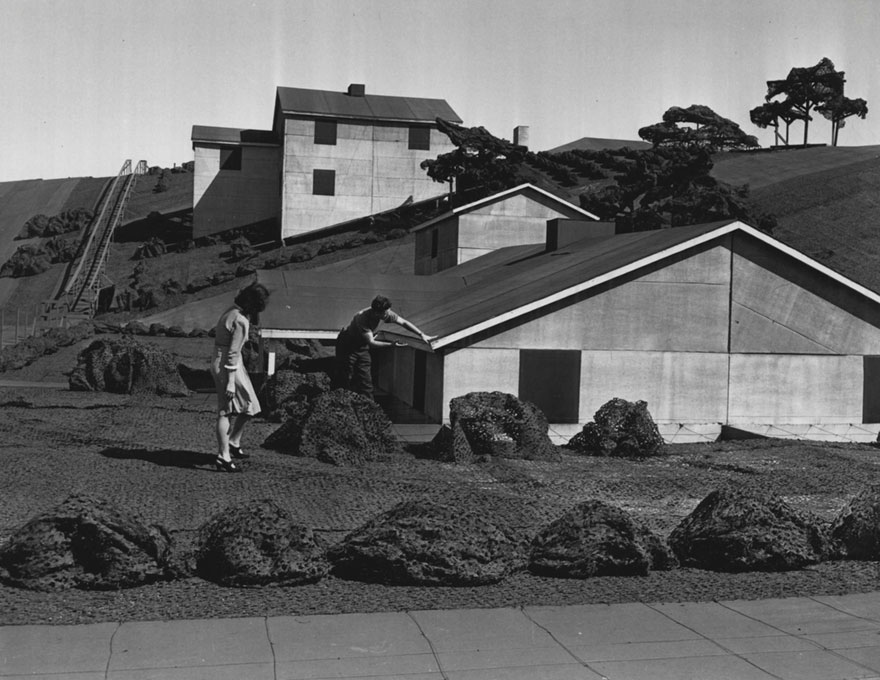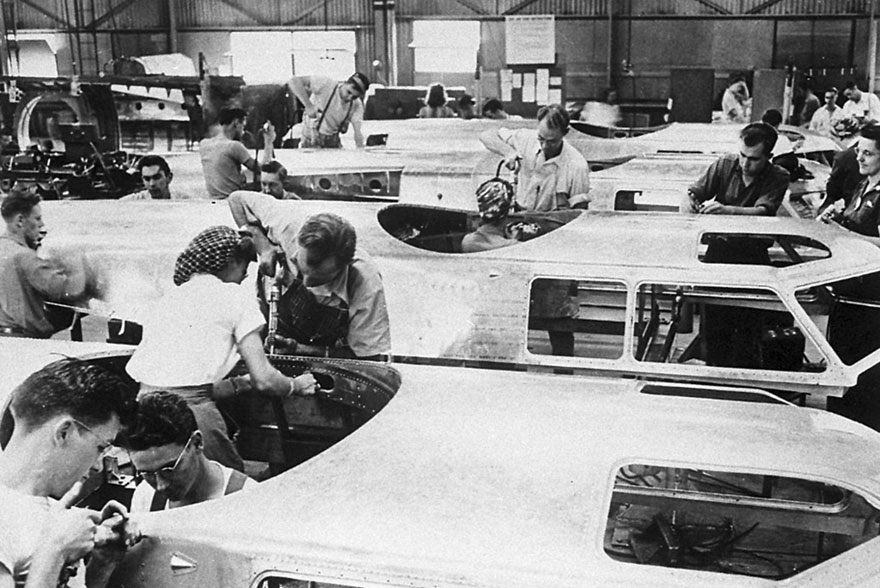17 Rare Pics Reveal A Fake Rooftop Town Built To Hide Boeing’s Factory From Japanese Air Strikes
During World War 2, one B-17 Bomber cost a little over $200,000 to produce. That’s about $3,4 million in today’s economy. And since the US Army requested thousands of these planes, they wanted to take every measure when securing the Boeing factory that produced them. And by “every measure” I mean hiring Hollywood set designers to build a fake neighborhood atop it and getting actors to inhabit the area.
Protecting it from potential air strikes, the “neighborhood” was constructed in 1944 and removed a year after the war. John Stewart Detlie was the Hollywood set designer who helped to hide the Boeing Plant No. 2. Using the same techniques as in the movies, fake streets, sidewalks, trees, fences, cars, and houses were set in place to fool the would-be attackers.
Underneath it, 30,000 men and women were constructing about 300 bombers per month to support the fight against Nazis. Boeing B-17 Flying Fortresses dropped over 640,000 tons of bombs over Germany alone during the conflict, and of the 12,731 aircraft built, about fifty remain in complete form.
In the 1960s, the first Boeing 737s were assembled in Plant 2, but finished in the neighboring Thompson Site where the production of the 737 was eventually moved to. In the 1980s, the site was used as a machine shop but that discontinued as work shifted to more modern facilities. Ultimately, the structure fell into decay and in 2010, Boeing began the demolition of the plant.
At first glance, this looks like an ordinary day in a small village with people enjoying the sun outside

But underneath this ‘peaceful town’ was a big military secret: a Boeing factory

During WWII, the U.S. Army designed a whole neighborhood to throw off possible air attacks

On the roof of Boeing Plant 2, camouflage trees and structures were shorter than a person

Trees were made of chicken wire and feathers

A street sign plays off the fake neighborhood at the corner of “Synthetic Street” and “Burlap Boulevard”

Suzette Lamoureaux and Vern Manion examine one of the miniature bungalows in the “Boeing Wonderland”

Structures that look like cars from overhead are parked along a fake street

An aerial view of the camouflage on top of Boeing Plant 2 shows that the “streets” were aligned with real residential neighborhoods nearby

Joyce Howe, and behind her Susan Heidreich, walking over the camouflaged Boeing Plant 2

Boeing plant aerial photo taken from around 5000 feet. This was taken in either 1944 or 1945

Thousands of Boeing workers gather in front of Boeing Plant 2 for ceremonies marking the changeover from B-17 to B-29 production on April 10, 1945

The first B-52A is rolled out at Boeing’s Seattle plant on March 18, 1954. In order to clear the hangar doorway, the plane’s 48-foot-high tail had to be folded down

Boeing Plant 2. 5000th celebrations

Boeing Plant 2. B-17G Flying Fortress cockpits under construction

B-17F production line, Boeing Plant 2, July 14 1942

“Rosie the Riveter” at work at Boeing Plant 2

Here’s how it looks like now

Protecting it from potential air strikes, the “neighborhood” was constructed in 1944 and removed a year after the war. John Stewart Detlie was the Hollywood set designer who helped to hide the Boeing Plant No. 2. Using the same techniques as in the movies, fake streets, sidewalks, trees, fences, cars, and houses were set in place to fool the would-be attackers.
Underneath it, 30,000 men and women were constructing about 300 bombers per month to support the fight against Nazis. Boeing B-17 Flying Fortresses dropped over 640,000 tons of bombs over Germany alone during the conflict, and of the 12,731 aircraft built, about fifty remain in complete form.
In the 1960s, the first Boeing 737s were assembled in Plant 2, but finished in the neighboring Thompson Site where the production of the 737 was eventually moved to. In the 1980s, the site was used as a machine shop but that discontinued as work shifted to more modern facilities. Ultimately, the structure fell into decay and in 2010, Boeing began the demolition of the plant.
At first glance, this looks like an ordinary day in a small village with people enjoying the sun outside

But underneath this ‘peaceful town’ was a big military secret: a Boeing factory

During WWII, the U.S. Army designed a whole neighborhood to throw off possible air attacks

On the roof of Boeing Plant 2, camouflage trees and structures were shorter than a person

Trees were made of chicken wire and feathers

A street sign plays off the fake neighborhood at the corner of “Synthetic Street” and “Burlap Boulevard”

Suzette Lamoureaux and Vern Manion examine one of the miniature bungalows in the “Boeing Wonderland”

Structures that look like cars from overhead are parked along a fake street

An aerial view of the camouflage on top of Boeing Plant 2 shows that the “streets” were aligned with real residential neighborhoods nearby

Joyce Howe, and behind her Susan Heidreich, walking over the camouflaged Boeing Plant 2

Boeing plant aerial photo taken from around 5000 feet. This was taken in either 1944 or 1945

Thousands of Boeing workers gather in front of Boeing Plant 2 for ceremonies marking the changeover from B-17 to B-29 production on April 10, 1945

The first B-52A is rolled out at Boeing’s Seattle plant on March 18, 1954. In order to clear the hangar doorway, the plane’s 48-foot-high tail had to be folded down

Boeing Plant 2. 5000th celebrations

Boeing Plant 2. B-17G Flying Fortress cockpits under construction

B-17F production line, Boeing Plant 2, July 14 1942

“Rosie the Riveter” at work at Boeing Plant 2

Here’s how it looks like now

Comments
Post a Comment